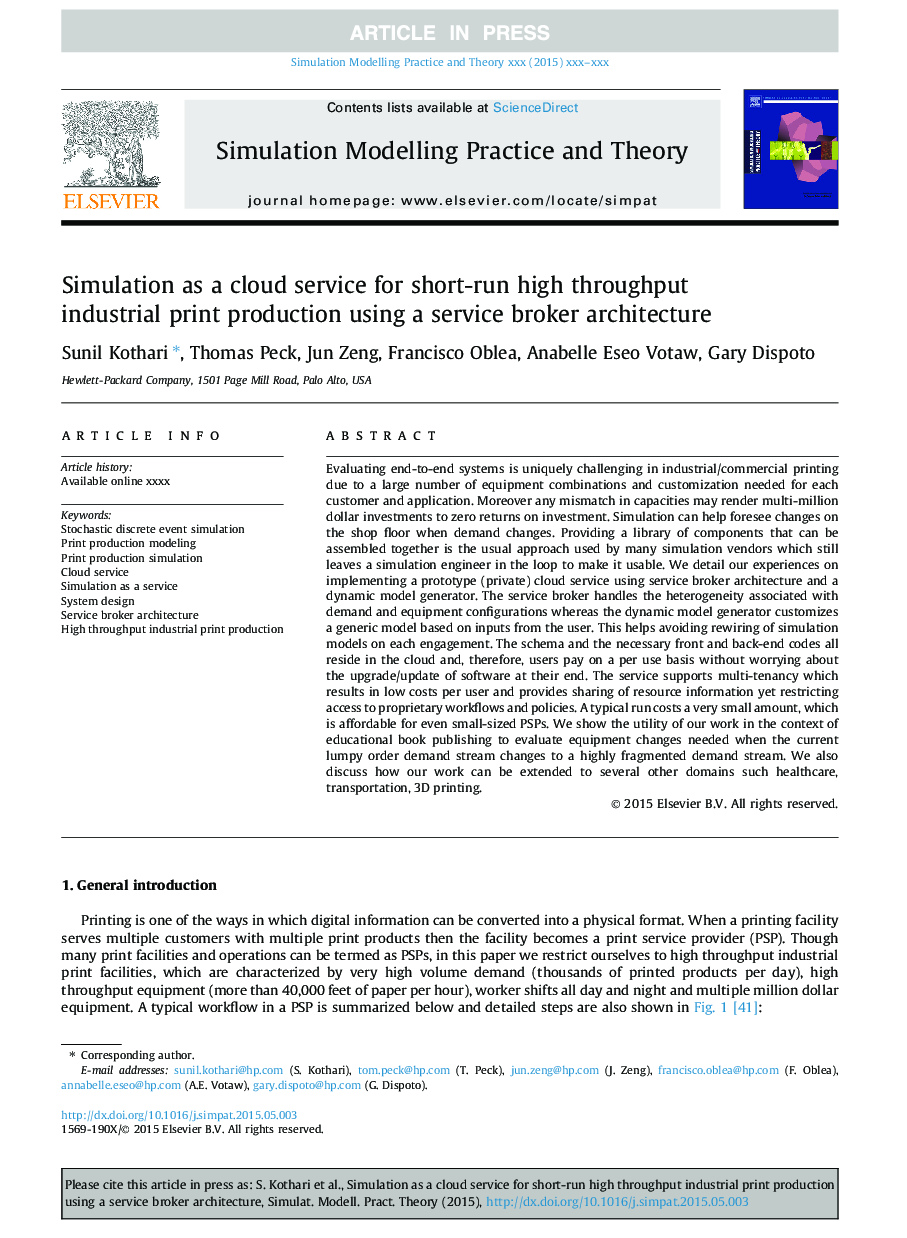| Article ID | Journal | Published Year | Pages | File Type |
|---|---|---|---|---|
| 10348706 | Simulation Modelling Practice and Theory | 2015 | 25 Pages |
Abstract
Evaluating end-to-end systems is uniquely challenging in industrial/commercial printing due to a large number of equipment combinations and customization needed for each customer and application. Moreover any mismatch in capacities may render multi-million dollar investments to zero returns on investment. Simulation can help foresee changes on the shop floor when demand changes. Providing a library of components that can be assembled together is the usual approach used by many simulation vendors which still leaves a simulation engineer in the loop to make it usable. We detail our experiences on implementing a prototype (private) cloud service using service broker architecture and a dynamic model generator. The service broker handles the heterogeneity associated with demand and equipment configurations whereas the dynamic model generator customizes a generic model based on inputs from the user. This helps avoiding rewiring of simulation models on each engagement. The schema and the necessary front and back-end codes all reside in the cloud and, therefore, users pay on a per use basis without worrying about the upgrade/update of software at their end. The service supports multi-tenancy which results in low costs per user and provides sharing of resource information yet restricting access to proprietary workflows and policies. A typical run costs a very small amount, which is affordable for even small-sized PSPs. We show the utility of our work in the context of educational book publishing to evaluate equipment changes needed when the current lumpy order demand stream changes to a highly fragmented demand stream. We also discuss how our work can be extended to several other domains such healthcare, transportation, 3D printing.
Keywords
Related Topics
Physical Sciences and Engineering
Computer Science
Computer Science (General)
Authors
Sunil Kothari, Thomas Peck, Jun Zeng, Francisco Oblea, Anabelle Eseo Votaw, Gary Dispoto,
